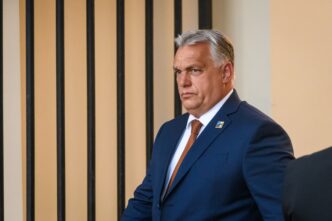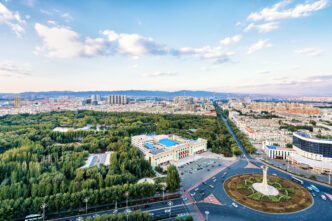Cardinals have convened at the Vatican to arrange Pope Francis’ funeral and burial, plan the conclave to choose his successor, and make decisions concerning the leadership of the Catholic Church. This comes as global leaders and faithful followers mourn the passing of the first Latin American pope. Initial decisions include scheduling when his body will be moved to St. Peter’s Basilica for public viewing. Images released show him in a wooden casket, adorned in red vestments and a bishop’s miter, with the Vatican secretary of state praying over him in the Domus Santa Marta hotel chapel, where he resided.
Pope Francis passed away on Monday at the age of 88, following a stroke that led to a coma and subsequent heart failure. He had been recuperating in his apartment after spending five weeks in the hospital with pneumonia. His final public appearance took place on Sunday, where he delivered an Easter blessing from the popemobile at St. Peter’s Square. This appearance from the same loggia where he was first introduced as pope on March 13, 2013, symbolized the conclusion of a 12-year papacy focused on revitalizing the church’s mission to aid the impoverished.
The first meeting of the Congregation of Cardinals is scheduled to begin at 9 a.m. Tuesday in the Vatican’s synod hall. They may permit public viewing of Pope Francis as early as Wednesday morning at St. Peter’s Basilica. According to norms established last year, the funeral and burial must occur between Friday and Sunday. In his will, Francis requested to be buried at St. Mary Major Basilica, located outside the Vatican, which houses his favored icon of the Virgin Mary. He frequently visited this basilica to pray and present flowers after returning from foreign trips and hospital stays.
In response to his death, bells tolled worldwide and flags were flown at half-staff in countries including Italy, India, Taiwan, and the United States. Soccer matches in Italy and Argentina were suspended in honor of the Argentine pope, a lifelong fan of the San Lorenzo soccer club. World leaders commemorated Francis for his moral guidance and compassion, while many remembered his humility and connection to ordinary people.
The pope’s formal apartments in the Apostolic Palace were sealed on Monday evening. Although he chose not to reside there, living instead at the Domus Santa Marta hotel, his body was transferred to the hotel’s chapel for a private viewing by Vatican officials. Under changes implemented last year, his body was placed in a simplified wooden coffin with a zinc interior, differing from the traditional three-coffin arrangement for previous popes.
The burial is expected to take place between the fourth and sixth day following his death, likely on Saturday or Sunday. U.S. President Donald Trump and First Lady Melania Trump, as well as Argentine President Javier Milei, are anticipated to attend. The funeral will be led by either the dean or the vice dean of the College of Cardinals, with pivotal roles played by Cardinal Re and Cardinal Farrell in organizing the conclave to elect the new pope.
Following the funeral, a nine-day official mourning period known as “novendiali” will occur, during which cardinals will gather in Rome for pre-conclave meetings. The conclave to select the next pope is expected to commence 15 to 20 days after the “sede vacante” is declared, although it may start sooner if agreed upon by the cardinals. Voting will occur in secret sessions, with ballots burned after each session. Black smoke signals an inconclusive vote, while white smoke indicates that a new pope has been elected. The successful candidate requires a two-thirds majority to win and must accept the position, followed by the announcement from St. Peter’s Basilica: “Habemus Papam,” meaning “We have a pope.”








